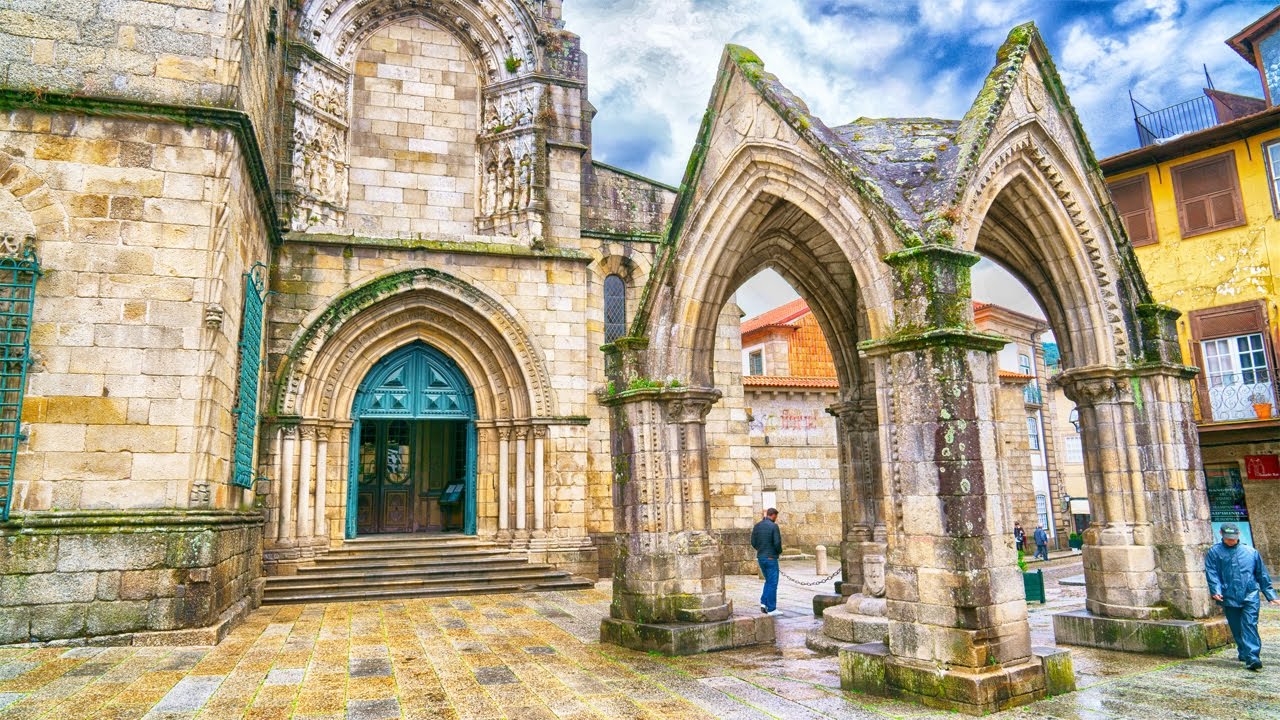Póvoa de Lanhoso Cultural Heritage
Castle aerial view
The Castle of Lanhoso (Portuguese: Castelo de Lanhoso) is a medieval castle located in the municipality of Póvoa de Lanhoso, Portuguese district of Braga
Filigree
The art of filigree - turning raw gold into wearable thin wires - has been known since the dawn of civilisation. Traces of pieces have been found from pre-Roman times in the area of northern Portugal around Povoa de Lanhoso.
Gold filigree is part of the heritage of this region and can be found in nearby places such as Póvoa de Lanhoso, Gondomar, Viana and other parts of northern Portugal. The festival of Senhora d’Agonia in Viana do Castelo is a showcase for the gold filigree traditions of northern Portugal. In the mordomas parade, hundreds of women wear their families’ much valued gold pieces acquired over generations.
BRAGA
Sanctuary of Bom Jesus do Monte in Braga
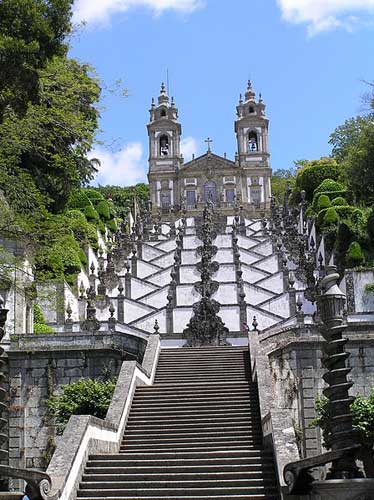
Located in the city of Braga, in the parish of Tenões (Santa Eulália), on Portugal’s northwest, the sanctuary of Bom Jesus do Monte is set on the hillside of the Espinho Mountain, overlooking the river Este valley, a tributary of the river Ave. The sanctuary is built facing west and has expansive views, at times of the ocean itself, overlooking the whole city of Braga, the Bracara Augusta founded in roman times of which it is historically inseparable, as well as the Cávado valley. The sanctuary is a type of architectural and landscape ensemble rebuilt and enhanced throughout a period of over 600 years, mainly defined by a long and complex Viae Crucis expanding up the hill, leading pilgrims through chapels that house sculptural collections evoking the Passion of Christ, fountains, sculptures and formal gardens. The sacred course is divided into two distinctive sections. The first one refers to the moments prior to Christ’s death. It starts from a portico, going through a zigzag course, with chapels and two monumental stairways – the Stairway of the Senses and the Stairway of the Virtues – ending in the church, also called the great chapel, which houses a representation of the station of Calvary; the second one refers to the glorious life of Christ resurrected, which begins in the church and culminates in the Terreiro dos Evangelistas [Square of the Evangelists] with Christ’s ascension chapel. The asset proposed refers to the Sanctuary itself – an ensemble which includes the portico, the pathways, the squares, the chapels, the fountains, the monumental stairway topped by the church – and its densely forested Cerca [Enclosure], a picturesque park with lakes built to naturally blend with the landscape, artificial grottos, buildings and structures of a diverse nature and serving different purposes. The Sanctuary and the Cerca are an integral part of each other – the mount molded itself to house the Sanctuary and they complete each other, forming a singular ensemble of outstanding architectural and landscape value, which embodies a sacred mount. The Sanctuary has a total area of about 30 hectares and, even though the property belongs to the Confraternity of Bom Jesus do Monte, it is accessible to the public.
Historic Centre of Porto
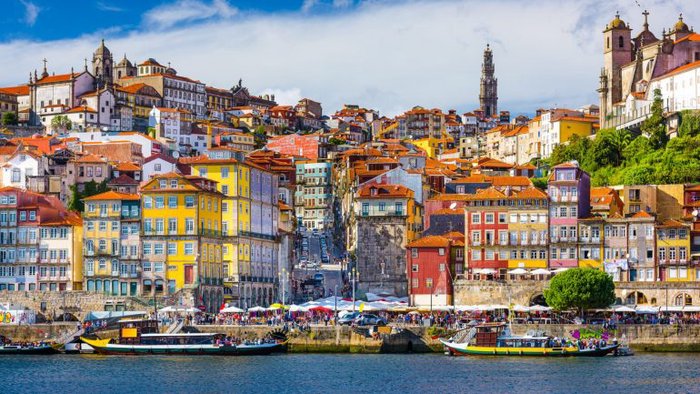
Historic Centre of Porto was classified as Cultural Heritage of Humanity by UNESCO in 1996. If you set out on foot along the typical alleys, with each step you will encounter a monument of indisputable value, the well known hospitality of the city's people and a stunning panoramic view of the old houses and Douro river.
The gastronomy, the crafts and the commerce offer an array of choices, from more traditional, supported by a past of great historical significance, to the more daring challenges from the young designers of the city. To take a break, we recommend visiting Praça da Ribeira (Ribeira Square), a privileged historic and personal meeting point as well as a place of regular liveliness. By foot, coach, cable car, train, car, mini-train, rickshaw, boat, or even by subway, the choice is yours... and the city as well!
Alto Douro Vinhateiro (Alto Douro Vineyards)
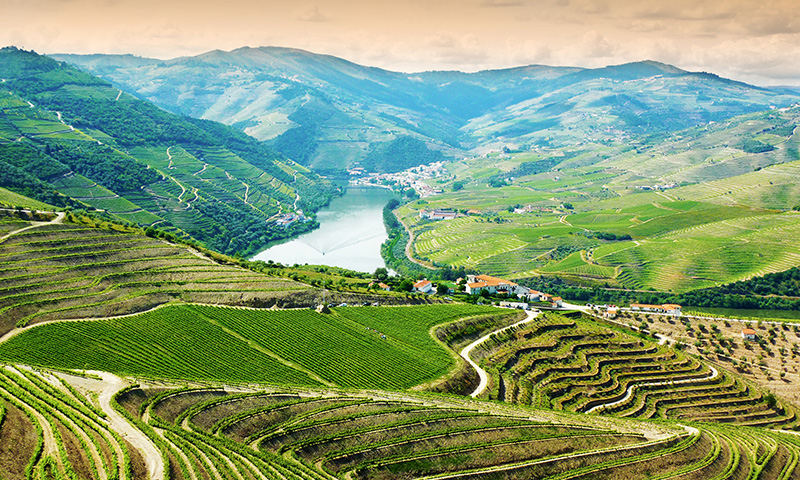
Alto Douro Vinhateiro (Alto Douro Vineyards)() reflect the most represented and best preserved area of the Demarcada do Douro region, which has also been the oldest regulated winemaking region in the world since 1756.
The cultural landscape is a multi century old work, from technical adaptations and knowledge connected to the cultivation of vines for this wine production with worldwide recognition. The wine produced here is reflected in its denomination of "Porto" or "Douro" origin, as well from other Mediterranean cultures such as olives and almonds. The quality and exceptional value justify the collective superhuman efforts from successive generations, translated into a universally picturesque landscape that is considered a collective masterpiece.
Since time immemorial, this landscape has been a passageway of peoples and a crossing of cultures. It's a place where the vines have been cultivated at least from the period of colonization by the Romans. It's a cultural landscape that is alive and evolutionary, focused on winemaking activities that were developed under extreme conditions, on steep slopes and predominately slaty soils with an enormous shortage of fertile soil and water. Reflected in the landscape is the unique relationship between man and nature, fostering the cultivation of vines by means of ingenious systems to prepare the land. The construction of the terraces supported by drystone walls stand out, built over the centuries covering a distance of hundreds of kilometers.
The cultural landscape of Alto Douro composes an exceptional example of a traditional European winemaking region, reflecting the evolution of this human activity over time.
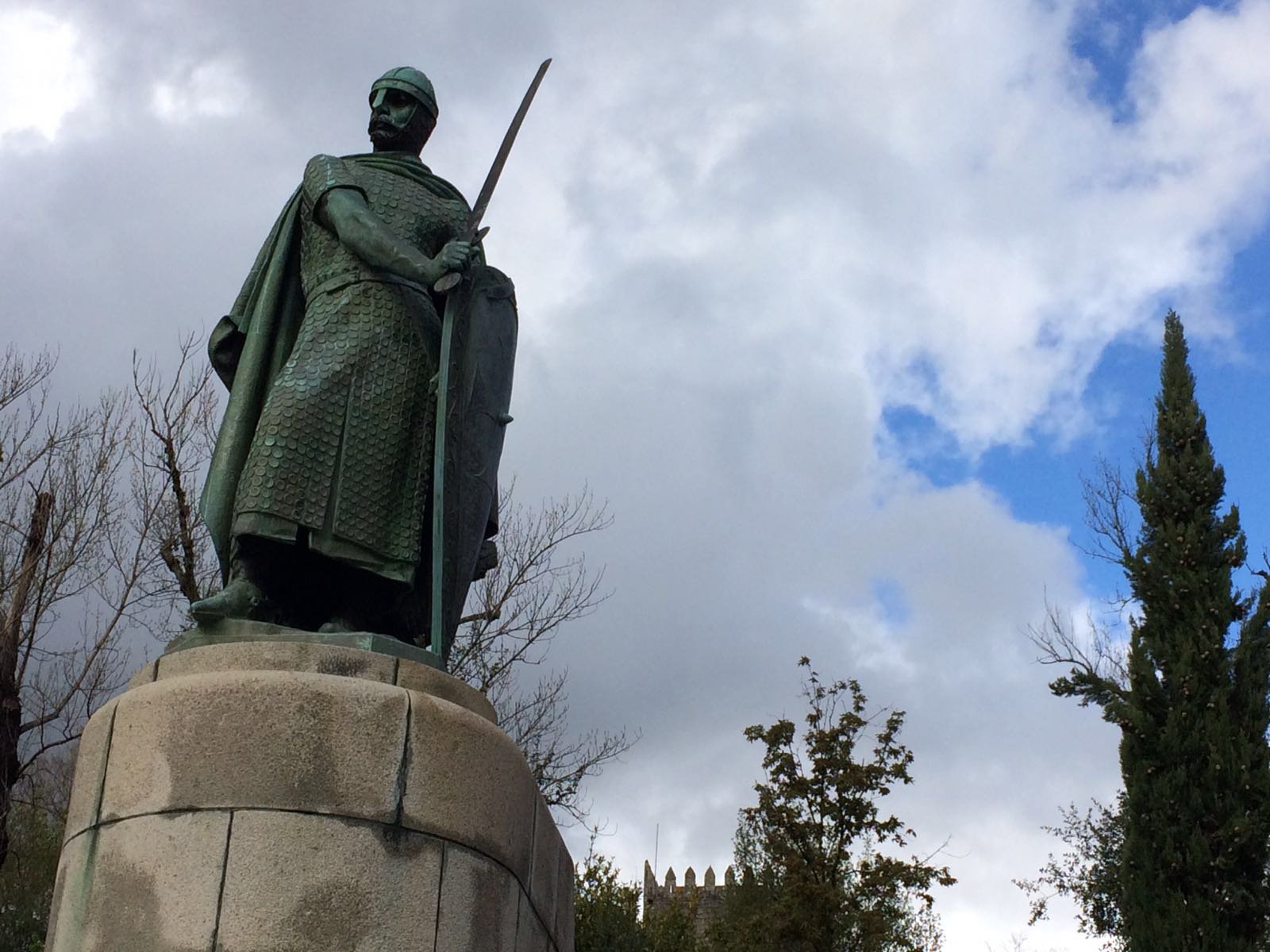
Guimarães is associated with the formation of Portugal's national identity in the 12th century. The harmony of the city, the technical traditions and the specific architectural features that illustrate the evolution of the city and its integration in its compelling landscape, give Guimarães an exceptional universal value. The city invites all of those who visit the streets of its Historic Center, feeling Portugal's history inscribed in the different monuments and squares, churches and museums. Explore the castle, where D. Afonso Henriques was born, the first king of Portugal and whose initial construction dates back to the 10th century. Discover the Paço dos Duques de Bragança (Palace of the Dukes of Bragança), a majestic manor house from the 15th century and classified as a national monument. Guimarães is a city of medieval origins, part of Heritage of Humanity and European Capital of Culture in 2012. It's exceptionally well preserved, maintaining the desire to take care of its historic legacy, coupled with the dynamics and challenges of assuming this legacy, as well as being a city with unique future oriented and modern characteristics
